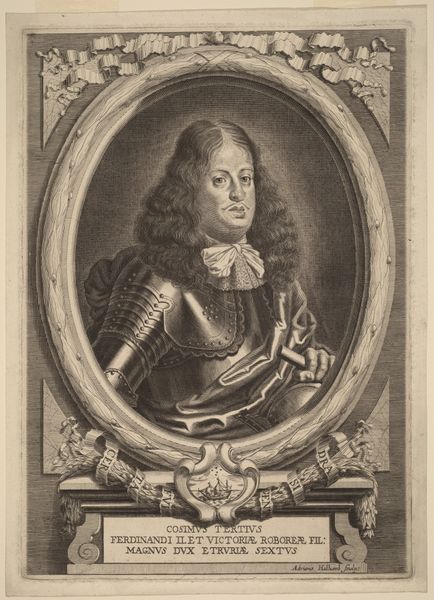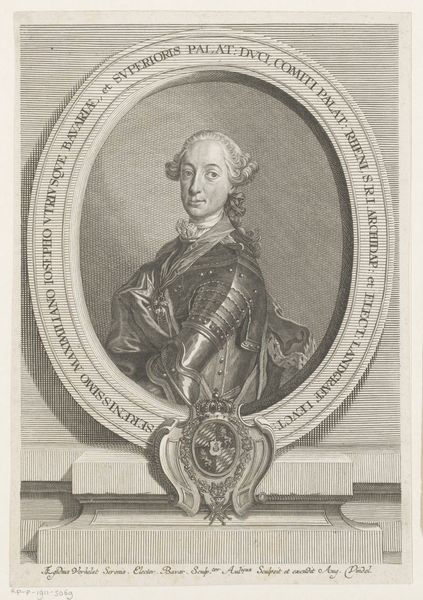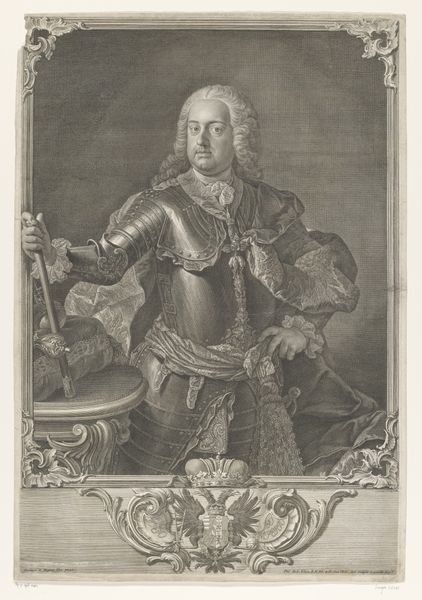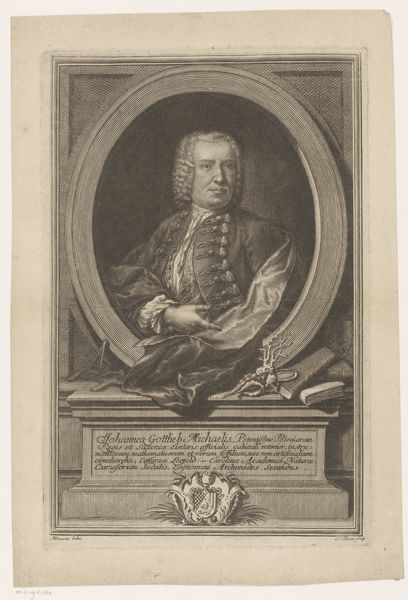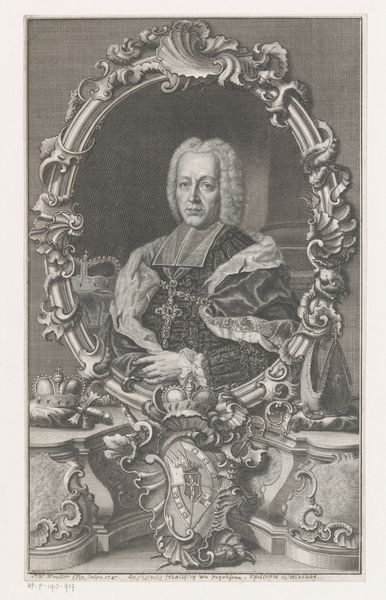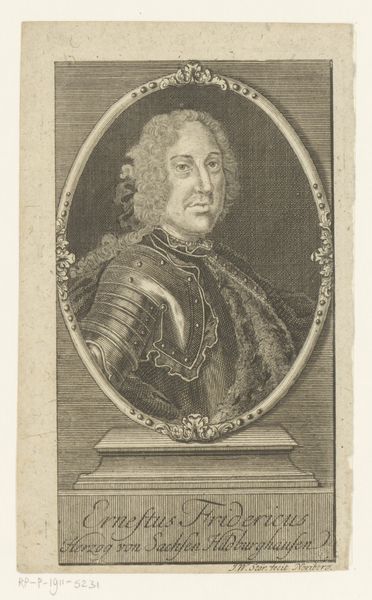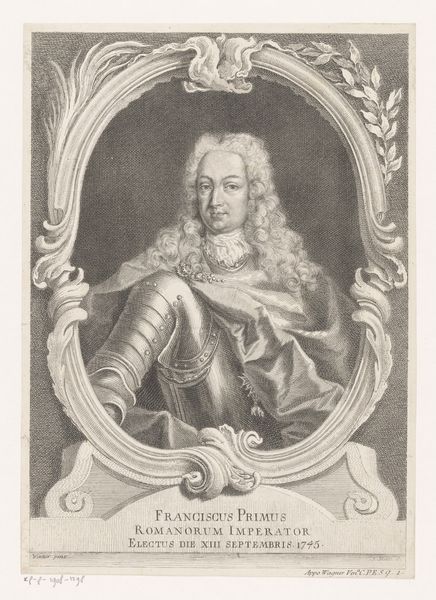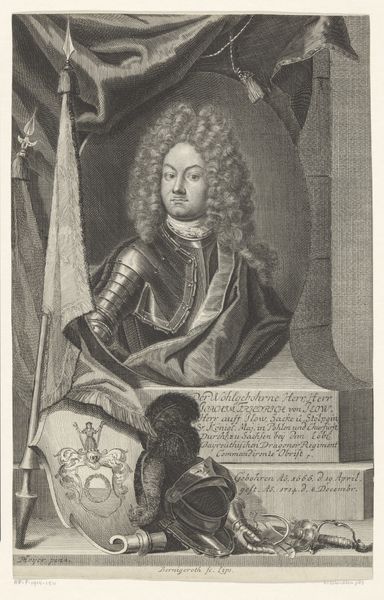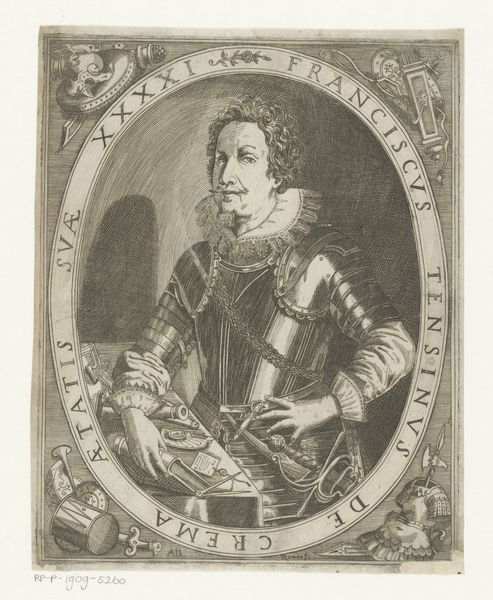
drawing, print, engraving
#
portrait
#
drawing
#
baroque
# print
#
old engraving style
#
men
#
portrait drawing
#
history-painting
#
engraving
Dimensions: Sheet: 17 15/16 x 12 11/16 in. (45.6 x 32.2 cm) trimmed
Copyright: Public Domain
Curator: Let's consider this work by Nicolas de Larmessin III, a print dating sometime between 1723 and 1747, titled "Portrait of Maréchal de Lowendal." The work on display here is an engraving. Editor: Immediately, the overwhelming sense is one of pomp and formality. The Maréchal stares out, framed within a frame, bedecked in armor that feels more performative than practical. Curator: Exactly! The print functions as a piece of political theatre, carefully constructing and disseminating an image of power. Consider the period— the Baroque era was defined by this emphasis on spectacle. Prints like these served to propagate the image of nobility. Editor: It's also the image of *masculine* nobility, heavily coded in military regalia. His hand rests on the helmet; it all speaks to a specific projection of strength and authority. The choice to depict him in armor seems to hearken back to a time when military might was directly tied to aristocratic power, a time which was waning, but whose symbolism still held currency. Curator: And it solidified Lowendal's reputation! Here was a military man, yes, but one embraced by the French court and positioned as a figure of influence. His service was acknowledged. Think of how the print would have circulated—replicating and reinforcing his status across geographical boundaries. Editor: Absolutely. It underscores the crucial role of art in image making— in this case, manufacturing and maintaining a legend, particularly for those in positions of power. Looking at it today, it prompts a question of what symbols and visual cues we perpetuate when lionizing figures of authority. Is it armor? Is it now something else? Curator: It certainly provides insight into how such powerful men wished to be seen, the stories they were consciously crafting around themselves. Editor: An exercise in propaganda and carefully constructed identity! Always beneficial to analyze these representations critically, reflecting on who gets remembered, how, and why.
Comments
No comments
Be the first to comment and join the conversation on the ultimate creative platform.

